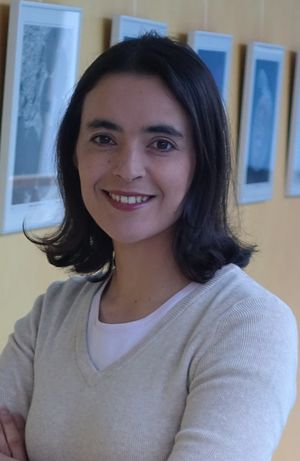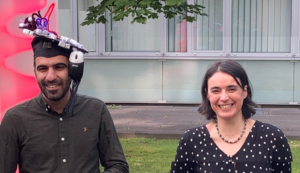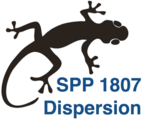Main Page: Difference between revisions
mNo edit summary |
mNo edit summary |
||
| Line 83: | Line 83: | ||
* PhD positions | * PhD positions | ||
<!--I have an open PhD position; see job ad [https://psi-k.net/jobs/phd-position-dept-of-physics-duisburg-uni-d/ here]--> | |||
I have an open PhD position; see job ad [https://psi-k.net/jobs/phd-position-dept-of-physics-duisburg-uni-d/ here] | |||
The [https://www2.daad.de/deutschland/stipendium/datenbank/en/21148-scholarship-database/?status=&origin=&subjectGrps=&daad=&intention=&q=&page=1&detail=57135739 DAAD] accepts applications from students of some developing countries to do their PhD in Germany. Students who are in the last year of an MSc. in Physics or Chemistry or who have recently completed their MSc., who have excellent writing skills and top grades (minimum average A, or 80%) in their MSc. and BSc., and who want to develop a research idea that fits well in my group, are welcome to contact me to develop an application. | The [https://www2.daad.de/deutschland/stipendium/datenbank/en/21148-scholarship-database/?status=&origin=&subjectGrps=&daad=&intention=&q=&page=1&detail=57135739 DAAD] accepts applications from students of some developing countries to do their PhD in Germany. Students who are in the last year of an MSc. in Physics or Chemistry or who have recently completed their MSc., who have excellent writing skills and top grades (minimum average A, or 80%) in their MSc. and BSc., and who want to develop a research idea that fits well in my group, are welcome to contact me to develop an application. | ||
Revision as of 13:50, 1 August 2024
Computational Soft Matter and Interfaces
On-going effort to tell you how I (Ana Vila Verde) and my research group spend our time. You'll know I've pulled myself together when there is enough information here to make it useful.
Research Topics
(For now, just a few place holders. "Soon" I'll write something that conveys how excited I am about what I do - hint: I like doing the work more than I like writing my webpage.)
We use particle-based simulation methods to investigate the structure and dynamics of soft matter and of interfaces, both biological and inorganic. We use mainly classical molecular dynamics or Monte Carlo methods and a variety of levels of description of matter (fixed-charge or polarizable all-atom, coarse-grained), with emphasis on advanced simulation techniques to enhance sampling of phase space thus allowing the calculation of thermodynamic observables such as relative free energies.
Halophilic proteins
Understanding the origin of their surprising functionality at high salt concentrations. We've shown (in this paper) that the solvation shell of mesophilic ("normal") proteins is just as robust to changes in salt concentration as that of halophilic proteins, and (in this paper that acidic amino acids on proteins, potassium ions and water can have stabilizing interactions.
Fluorinated (bio)molecules
How fluorination impacts the structure, dynamics and thermodynamics of hydration, the hydrophobic effect, and protein stability and conformation.
We've shown that and how fluorination has unexpected impact in the hydrophobicity of fluorinated amino acids (here and here; in collaboration with the experimental group of Beate Koksch), and in specific how solvation shells are perturbed by the introduction of one or more CF bonds: (CF3 groups, CF, CF2 and CF3 groups, and CF2 groups in linear diols) (in collaboration with Dor Ben-Amotz.
Proteins under force
Through simulations by Ana Vila Verde, Single Molecule Force Spectroscopy experiments done in the group of Kerstin Blank and physical insight from Angelo Valleriani we were able to show that the alpha-to-beta transition of protein coiled coils pulled in shear geometry is less likely for dimeric coiled coils and at low pull speeds, because chain sliding and chain dissociation preferentially occur under those conditions.
Hydrated ions
Hydration of inorganic and organic ions; ion-ion interactions.
We have clarified the structure of MgSO4 solutions (here; in collaboration with Martina Havenith) and that both additive and non-additive effects impact water dynamics at high MgSO4 concentrations (here and here)
Force field development
Optimized parameters for ions in the AMBER/GAFF force field: AMBER-ready input files here; Gromacs-ready input files here
The Amber/GAFF suite of force fields is widely used by the molecular simulation community. We have recently developed Lennard-Jones parameters (see the SI of [1] and of [2]) that better describe ion-ion and ion-TIP3P water interactions, fully compatible with AMBER/GAFF. We provide improved parameters for the interaction of anions (carboxylates, sulfates, sulfonates, phosphates) with TIP3P water and with important cations (sodium, potassium, ammonium and primary amines). We strongly recommend using these parameters to adequately describe, e.g., salt bridges between acidic amino acids and lysine, and protein solvation at high NaCl and KCl concentrations. Many of the ions are present in buffer solutions typically used experimentally; our parameters enable investigating the impact of buffers on protein structure and dynamics.
Force fields for fluorinated amino acids:
AMBER-ready input files to simulate amino acids with CF3 groups are in the SI of this paper, and for those with CF and CF2 groups are here
DIY: Modifying Lennard-Jones parameters in the Amber force field
Should you ever need to do it yourself, this tutorial explains how to:
- Modify the self-interaction Lennard-Jones parameters of oxygens of carboxylate groups in proteins.
- Modify the Lennard-Jones parameters defining the interaction between sodium ions and the oxygens of carboxylate groups in proteins.
Members
Post-docs
- Dr. Sulejman Skoko (starting 01.09.2023).
PhD students
- Elio Casalini (starting 15.06.2022)
Former Members
I have been fortunate to work with some wonderful students and post-docs. Here they are:
- Robin Singh, currently at Gravity PCM Institute.
- Fatemeh Mehdikhani, a PhD student from the group of Prof. Ehsan Nedaaee at the Institute for Advanced Studies in Basic Sciences, Zanjan, Iran, visited us for 6 months on a RESOLV fellowship.
- Dr. Hosein Geraili, who completed his PhD in the group and continued his project as a post-doc.
- Dr. Ana Elisa Bergues-Pupo, currently a Bioinformatics Scientist at Targenomix GmbH, in Berlin.
- Dr. Sadra Kashefolgheta, currently at the R&D Pharmaceuticals department of Bayer, Wuppertal, Germany.
- Dr. Chuanfu Luo
Publications
Best checked in my Google Scholar profile, which I keep tidy and up-to-date (mostly), or using my ResearcherID (H-7805-2013) in Web of Science.
My CV, funding, referee activities can be seen in my ORCID record. My pubIons record is also reasonably informative (my referee activities are incomplete, though); my Scopus record is out-of-date.
Jobs
- Post-doc positions: I have no positions available.
PhD students in their last year or who very recently graduated, with excellent writing skills and who wish to develop a research idea that fits well in my group, are welcome to contact me to develop an application for the Walter Benjamin program, which currently has high success rates. The whole procedure takes about 9 months. The program has no nationality restrictions.
- PhD positions
The DAAD accepts applications from students of some developing countries to do their PhD in Germany. Students who are in the last year of an MSc. in Physics or Chemistry or who have recently completed their MSc., who have excellent writing skills and top grades (minimum average A, or 80%) in their MSc. and BSc., and who want to develop a research idea that fits well in my group, are welcome to contact me to develop an application.
News
- 24.02.23: Hosein Geraili and collaborators in the group of Rasmus Linser mechanistically expalin using simulation and NMR that the non-monotonic and non-linear impact of salt on protein dynamics stems from electrostatics, rather than from changes in the hydrophobic effect as previously believed. See our paper in ChemBioChem.
Olds
- Congratulations to Hosein Geraili for defending his PhD Thesis The role of acidic amino acids in the hydration and stabilization of halophilic proteins!
- Hosein Geraili shows that acidic amino acids are not necessary to keep proteins hydrated at high concentrations of KCl in his article in the Biophysical Journal,
- Ana Bergues clarifies the mechanisms governing the deformation of peptide alpha helices pulled in tension in her article in PCCP.
- João Robalo shows that features of the hydration shell of CF3 groups are fundamentally different from those around CH3 in his paper in JACS.
Useful information for grad students and post-docs
Research guidelines
- Guidelines for good teaching and scientific practice, and contact details for ombudspersons and ethics committees of DUE are here.
- RESOLV-affiliated students and post-docs may also contact the RESOLV ombudspersons
The ombudsperson may be contacted confidentially by students or post-docs if you have conflicts of a scientific nature with your advisor that you feel you cannot address by a direct conversation with the advisor.
Support for non-scientific issues
The Gender Equality Officers (GEOs) and the Personalrat (PR) may be contacted by students or post-docs for guidance to solve problems of a non-scientific nature with the advisor.
GEOs and the PR have a broad understanding of the university, so they are good initial contact partners even for issues that you think are outside their competence; they will be able to indicate who is the best contact partner for a given issue.
Both GEOs and the PR are under Schweigepflicht (strict confidentiality). They cannot take action or even disclose any information you give them without your explicit permission.
Computing resouces
Group info
Recent and current collaborators
In no particular order:
- Prof. Dr. Dor Ben-Amotz , Dept. Chemistry, Purdue University, USA.
- Univ.-Prof. Dr. Kerstin Blank , Johannes Kepler University Linz, Linz, Austria.
- Prof. Debbie Crans, Colorado State University, Fort Collins, Colorado.
- Prof. Paul Cremer , Penn State University, State College, Pennsylvania, USA.
- Prof. Dr. Martina Havenith, Ruhr-Universität Bochum, Bochum, Germany.
- Prof. Dr. Christian Herrmann, Ruhr-Universität Bochum, Bochum, Germany.
- Prof. Dr. Petra Imhof, Department of Chemistry and Pharmacy, Friedrich Alexander University Erlangen-Nürnberg, Germany.
- Prof. Dr. Beate Koksch, Department of Biology, Chemistry, Pharmacy/, Free University of Berlin, Germany.
- Prof. Nancy Levinger, Colorado State University, Fort Collins, Colorado.
- Prof. Dr. Rasmus Linser , Technische Universität Dortmund, Dortmund, Germany.
- Dr. Óscar Millet, CIC bioGUNE, Derio, Bizkaia, Spain.
- Prof. Seyed Ehsan Nedaaee Oskoee, Institute for Advanced Studies in Basic Sciences, Zanjan, Iran.
- J. Prof. Dr. Dan Obenchain, Institut für Physikalische Chemie, Georg-August-Universität Göttingen, Germany.
- Dr. Gabriel Ortega, CIC bioGUNE, Derio, Bizkaia, Spain.
- Prof. Dr. Poul Petersen , Ruhr-Universität Bochum, Bochum, Germany.
- Prof. Dr. Melanie Schnell, Christian-Albrechts-Universität zu Kiel, Germany.
- Prof. Eric Tyrode, KTH Royal Institute of Technology, Stockholm, Sweden.
- Dr. Angelo Valleriani, Max Planck Institute of Colloids and Interfaces, Potsdam, Germany.
Research affiliations and funding
How to reach me/contact me
Email: ana.araujo-vila-verde _at_ uni-due.de
Where I do my thinking: Lotharstr. 1, 47057 Duisburg, building MF, office 246 (2nd floor). Click here for directions
Postal address University of Duisburg-Essen, Faculty of Physics (AG Kuiper), Lotharstr. 1, 47057 Duisburg, Germany




